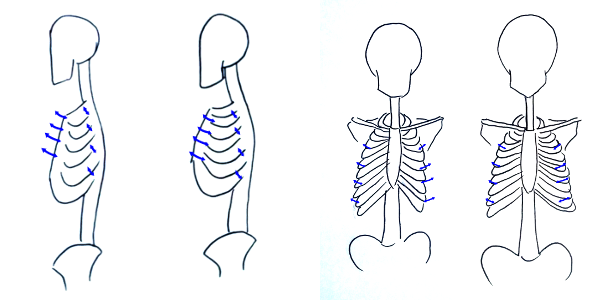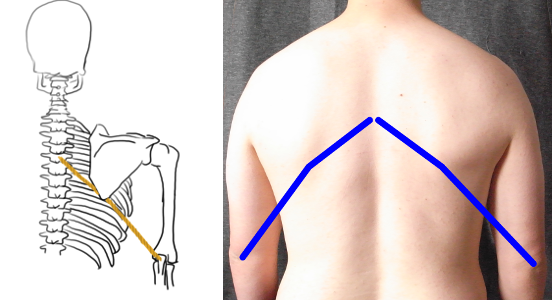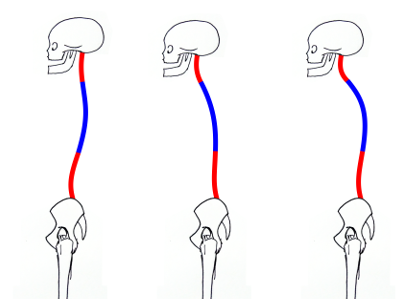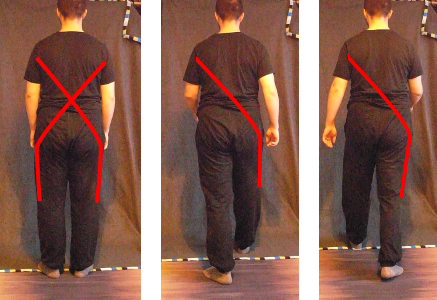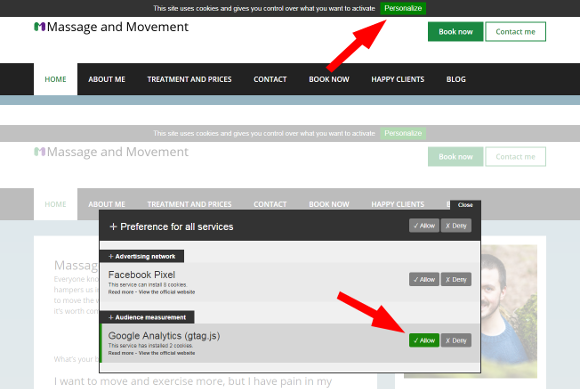The previous posts about breathing were all about the abdomen, but obviously there is more than that to breathing! Today we will tackle some of what happens in the rib-case when we breathe. This will free some parts of the rib-case we rarely think about moving, and hopefully give you a deeper, smoother breathing.
First, as often, a bit of anatomy: on the front of your chest is a plate of bone called sternum. This is connected, via the ribs, to the spine. For today, we will concentrate on the sternum, and the first rib. You can find this rib just under your clavicle (collar bone). Try and follow it out; it will soon disappear from under your fingers. Depending on the state of your tissue in this area, you can find it at the base of your neck, between your clavicle and upper traps.
The ribs are articulated, and can move in two directions (and some more, but that’s more than we need). They can move out, so that the part of the rib which is furthest from the midline of the body moves up and away from it; and they can move up, so that the part of the rib which is touching the sternum goes up. Obviously that means that there also is some mobility between the ribs and the sternum, to allow for these movements.
Now for our image: we will imagine the sternum and first rib as one key-shaped thing (they articulate only slightly). And this key will, articulating at the bottom of the neck, roll up and forward as we breathe in, and drop slightly back and down as we breathe out.
This image is particularly helpful for people who seem to have a hole in the middle of the chest, as if the ribs were coming back in towards the stomach.
Continue reading: Breathing 1: Abdominal Breathing, Standing Posture And Alignment, 5 Daily Opportunities To Perfect Your Posture.
Want more like this?
Check out the following blogs from massage therapists I know from around London:- On The Run Health and Fitness on running, nutrition and sports massage.
- The Soma Room on sports massage and exercise.

